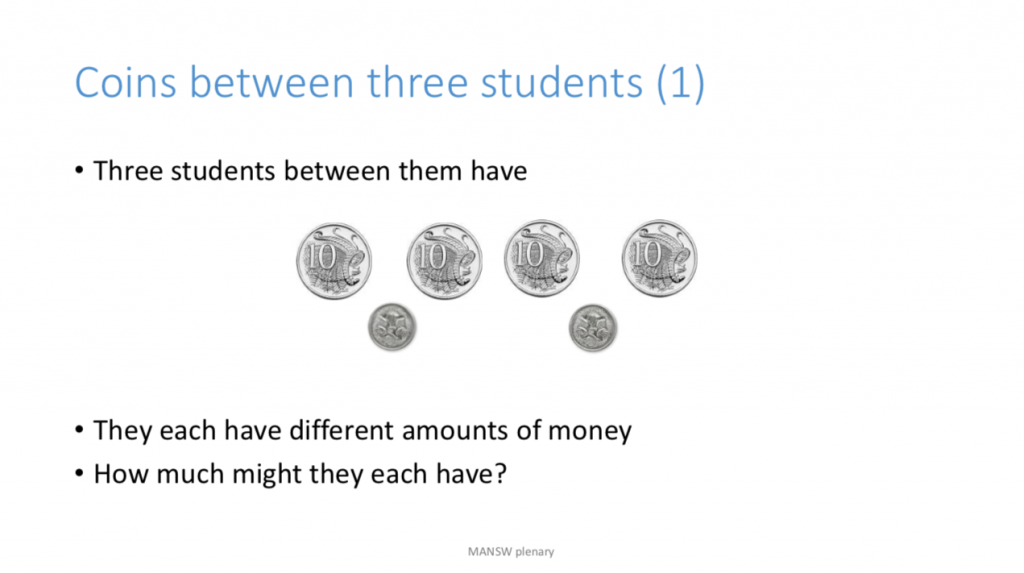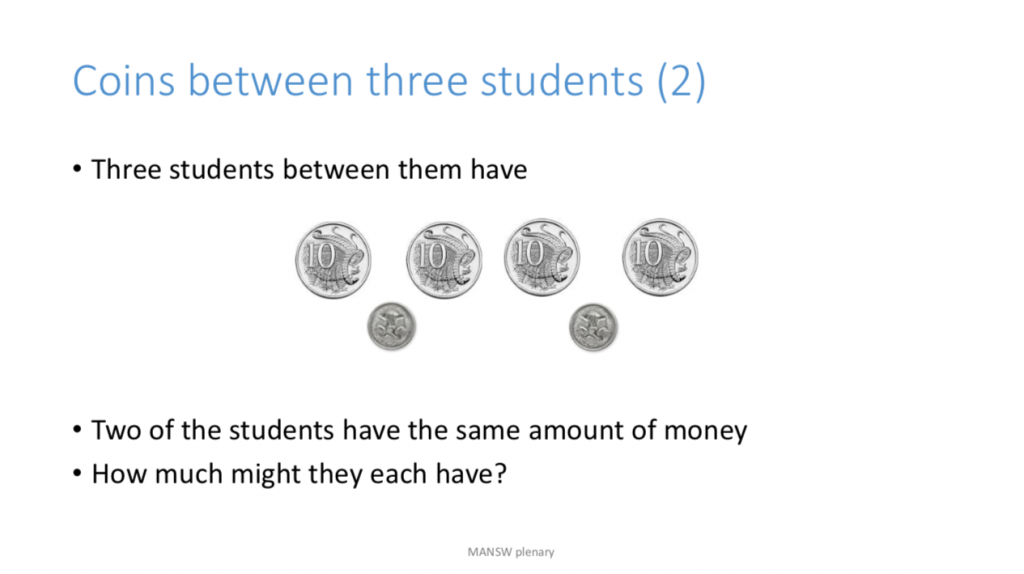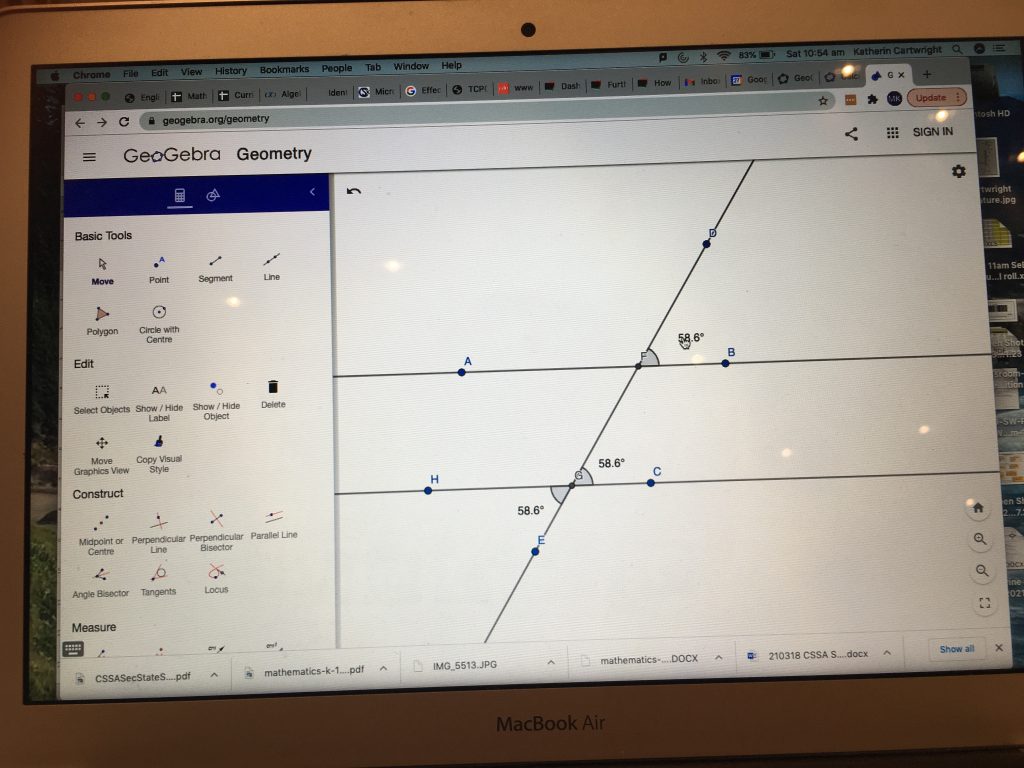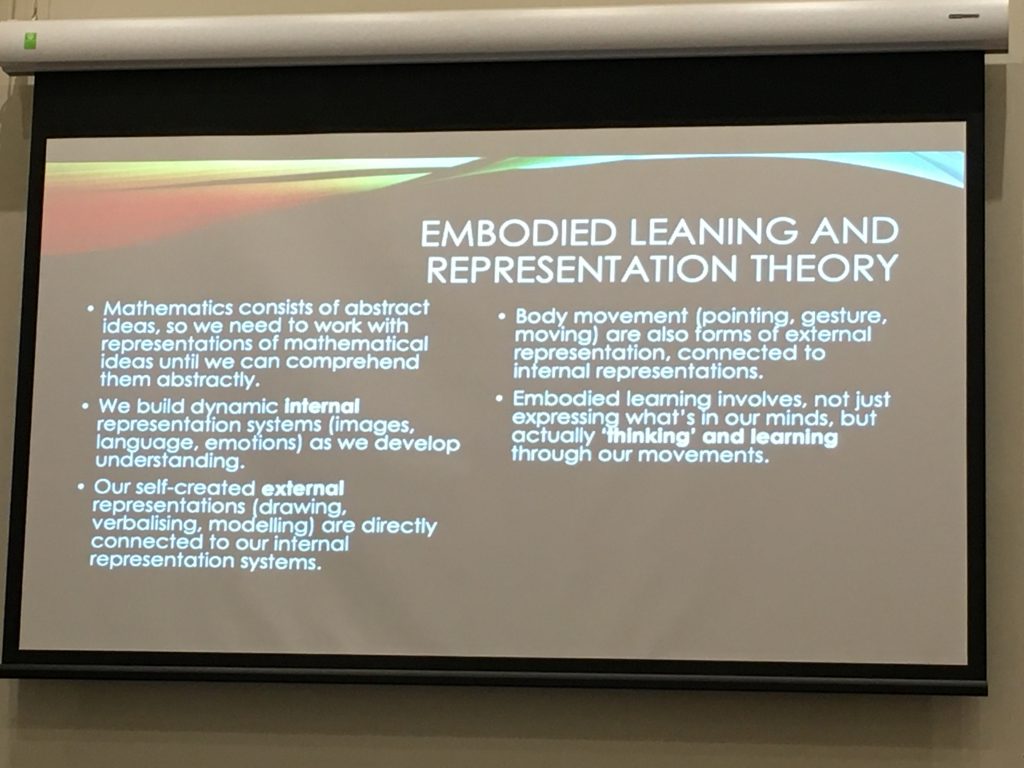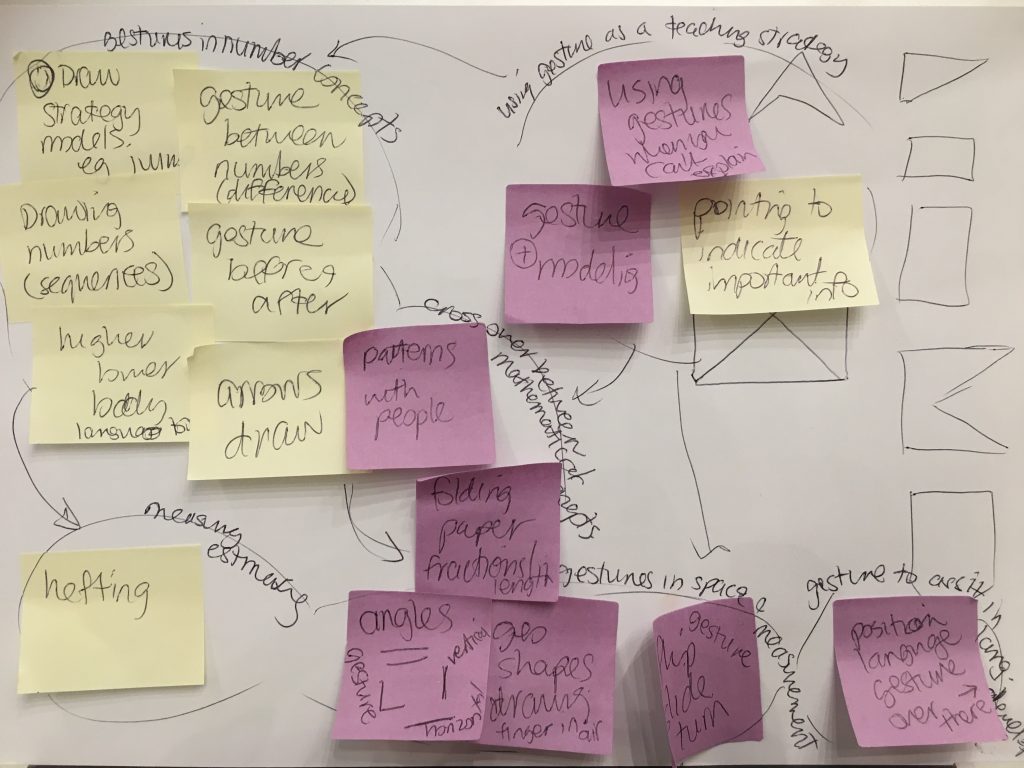This week’s blog is a continuation of my reflections on MANSW’s PreK-8 conference held in March 2021. The first blog Noticing the mathematics: Making the connections Part 1 shared insights and lessons learnt from the two Friday masterclasses. Part 2 will share some of the ideas gathered from Saturday workshops I attended and the morning keynote by Peter Sullivan.
Making learning more robust
Peter Sullivan delivered the opening keynote on Saturday morning. Peter talked about the importance of connecting student learning with curriculum goals and subsequent learning experiences to make learning more robust and transferable. Students’ learning needs to be activated – but then what? Peter posed the question what does consolidating look like? Students should think for themselves and engage in actively creating their own knowledge. For this to occur, tasks need to be structured to maximise engagement and then these tasks need to be sequenced so the lessons build on each other. This is what effective curriculum planning looks like.
Effective programming involves teachers being active prior, during and after the lesson in planning (and being ready for) students’ responses. Peter referred to Smith and Stein’s work on the five practices for orchestrating productive mathematics discussions (David Butler @DavidKButlerUoA wrote a great review blog you can read here).
Smith and Stein’s work focuses on the planning that happens prior to the lesson, the monitoring and facilitating that occurs during the lesson and the role of the teacher in drawing connections between students’ responses as well as connecting their responses to the mathematical concepts. Peter added two more practices – sharing students’ responses and encouraging students to learn by listening to others (a nice link to talk moves).
Peter went on to discuss the role students play in their own learning. They need to study exemplars and models to prompt further thinking and self-improvement. Students can then take ideas and adapt them, extending their thinking. Peter said too many students’ thinking seems to become more routinised rather than flexible. While teachers help students make sense of the mathematics, the hard work needs to be done by the students. Peter said that tasks should ideally:
- connect domains within mathematics
- between mathematics
- and the world
Students should have opportunities to explore tasks without always having explicit instructions from the teacher up front. if the teacher says ‘this is how you do it’, then whatever the student does is just a reproduction of what the teacher knows – where is the learning? where is the new knowledge? Peter supported the idea of using a launch, explore, summarise teaching model (one I have blogged about in the past). He encouraged teachers to try it out in the classroom and learn from the students, from their responses – plan to notice. Peter then shared a number of tasks that provide challenge for all students and demonstrated some good questioning techniques to use during the lesson. Allowing students to explore a task doesn’t negate explicit teaching, it just moves it to a more appropriate place in the lesson – which is often after students have attempted and struggled (productively) with the task first.
GeoGebra – Learning through discovery
I was lucky enough to attend Ruth Glasgow’s (@glasgow_ruth) workshop session on using GeoGebra. Ruth is the 7-10 consultant at MANSW and although my teaching area is mainly primary, I love learning from Ruth. I had used GeoGebra in the past but had mainly used lesson ideas and visuals created by other teachers, Ruth gave a step-by-step walk through in how to create several simple concepts including; vertically opposite angles, parallelograms, and a variety of triangles. The app is fantastic and just as usable in Stage 3 primary classes as it would be in Stage 4 secondary classes. The use of dynamic geometry applications to visually show students how mathematics work is essential for effective classroom practice. Ruth also walked us through how to set up investigative tasks for students to explore GeoGebra themselves and how to lead students to discover the mathematics themselves – not just follow a recipe for creating shapes and angles. Students would develop a richer picture of the concepts by problem solving and trying out different ways to make shapes in GeoGebra. Thanks Ruth!
Pre-K to 8 Mathematics Conference with Ruth Glasgow - GeoGebra - Learning through discovery (3-8) #noticingthemaths #mansw https://t.co/RvbU5JLWG3
— Maths Assoc NSW (@MathsNSW) March 28, 2021
Motion mathematics
I also attended Associate Professor Jenni Way’s (@Way8Jennifer) workshop session on young students’ representations – specifically the use of gesture. Jenni talked about how to use body movement to help students notice what we want them to notice (mathematically). She talked about the power of learning by doing and how mathematics could gain some ideas from other areas such as sport – tasks that require physicality. Improving at sport often focuses on high expectations, patience, and practicing parts of the whole.
During Jenni’s session we each brainstormed post-it notes how how we use different representations to communicate mathematical ideas to our students. We built on the brainstorming map as the session continued, adding to it as more things came to mind. They were from all areas of mathematics, such as number patterns (clapping), position (hand movement for directions), number strategies (drawing number lines), and measurement (indicating length wth hands). Jenni pointed out that space (geometry) was one area where we heavily use gesture – size, shape, features, sides, vertices, orientation etc. Jenni discussed current research on embodied learning and representation theory in mathematics and how students improved their ability to visualise shapes and mathematical ideas when tracing was introduced prior to students trying to draw a shape.
Jenni had us creating shapes with string and masking tape and had us working in groups – during the group work all participants used gesture to collectively work out how to solve the task. Jenni shared that students, just like we did, often spontaneously use gesture when talking about shapes. She went on to mention that when students have less or limited vocabulary, more gesture can be noticed. This was something to think about further when working with students who’s mathematical vocabulary is still developing or is limited. Gesture is one way students may be able to communicate understanding and knowledge that hasn’t been noticed before. Recent research by Jenni and her colleague Christine Preston also revealed that students’ gesture showed a greater level of conceptual understanding than through their verbal responses or drawings. Jenni challenged us to consider – what do you already use gesture for? and what new ideas do you have?
There were plenty more workshops that I wasn’t able to attend (some pictured below), i love that each year the calibre of workshops continue to grow and there is never enough time to see them all! As I mentioned in my previous blog, you can also check out the hashtag #noticingthemaths to see more of what went on at the conference. I’m already looking forward to 2022! Thanks MANSW and the PAM committee team.
Building spatial awareness and reasoning with Soma cubes @gould_peter #noticingthemaths #mansw pic.twitter.com/NY3xof55FI
— Amber Bidwell (@AmberBidwell1) March 27, 2021
MANSW Pre-K to 8 Mathematics Conference - Dr Gabrielle Oslington workshop on Statistical Literacy #noticingthemaths #mansw https://t.co/buHvFENLel
— Maths Assoc NSW (@MathsNSW) March 29, 2021
Yesterday I had a fun time presenting at the K-8 @MathsNSW conference about visually sequencing mathematical ideas. We had an engaging and productive workshop. Thank you to everyone that participated #noticingthemaths #bansho #板書 #ばんしょ https://t.co/TACwx5fNNF
— Frances Lee (@MissFlee_) March 27, 2021

